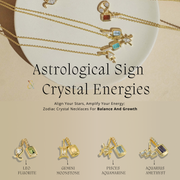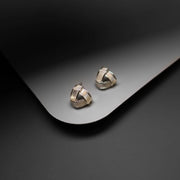Ruby History and Symbolism
Ancient and Classical Traditions
In ancient Indian tradition, rubies were called "Ratnaraj," meaning "King of Gems." Because of their deep red color, associated with blood, they were considered a symbol of vitality and power.
The Bible mentions rubies in numerous passages, emphasizing their beauty and wisdom.
In the first century AD, the naturalist Pliny described the hardness and density of rubies in his Natural History.
In Hinduism, offering rubies to the god Krishna was believed to guarantee rebirth as an emperor. Rubies are classified into four grades based on their quality, with genuine oriental rubies being ranked at the highest, "Brahman," symbolizing absolute safety.
In Burma (formerly known as the Shan State), warriors believed, since at least the sixth century AD, that wearing rubies could render them invulnerable or even invulnerable to weapons. Some warriors even implanted the gems in their bodies to ensure eternal protection.
Medieval and Renaissance Europe
During the Middle Ages and Renaissance in Europe, rubies were commonly worn by aristocrats and physicians, and were believed to bring blessings of health, wealth, and love. A symbol of status, loyalty, and love, rubies frequently appeared on the jewelry of popes, kings, and nobles.
The 16th-century alchemist Paracelsus used ground pink rubies in medicine to treat ailments such as cancer and ulcers, viewing them as agents of rekindling vitality. This belief perpetuated the European mystical belief in rubies for healing and rebirth.
Symbolism
Due to its intense red color and its close association with blood, rubies are widely considered a life-giving stone, offering protection against disasters, storms, and even war. In ancient beliefs, rubies could bring peace, wealth, and even the birth of new gems.
Legends of rubies' "inner light" are widespread: It's said that placing a ruby in water can actually cause it to boil; that it can even glow and radiate when wrapped in a cloth bag; and that its "torch-like" radiance, observed as a symbol of the stone's inextinguishable energy, is a symbol of its inherent power.
There are also legends that rubies are considered "living stones," governing emotions and wisdom. Traditional texts refer to deep red rubies as "male gems" and lighter red rubies as "female gems," believing they could alleviate anger, dispel negativity, and help resolve conflicts, allowing the wearer to maintain calmness and perspective.
Ruby is now the traditional birthstone for July and is often used to commemorate 15th and 40th wedding anniversaries. According to GIA, pigeon's blood red, a "deep crimson with purple," is the highest color grade in the industry. Ruby also symbolizes passion, power, and romance, making it an ideal Valentine's Day or engagement gem.
Modern times have given ruby new symbolic meanings: eternal love, the stimulation of vitality, and the accumulation of career and wealth. It also represents courage and passion, imbuing its bearer with a noble aura, making it suitable for celebrations and legacy purposes.
Where are Ruby found?

Myanmar
Myanmar's Mogok Valley (also known as the "Valley of Rubies") has been synonymous with top-quality rubies since ancient times. Its "pigeon's blood" gemstones are renowned for their intense color and pure hue.
The region once produced 90% of the world's top-quality rubies, and its exceptional color and transparency have long been considered an irreplaceable benchmark of quality.
While production has declined significantly in recent years, it is still considered one of the most historic and valuable sources of rubies.
Mozambique
Since the discovery of the Montepuez mine in 2009, operated by Gemfields, Mozambique has rapidly emerged as one of the world's top suppliers of rubies.
Not only has it produced hundreds of tons of gemstones, but their vibrant red and transparency have quickly earned them a market reputation comparable to that of Myanmar.
Production climbed to nearly 4 million carats in 2024 and is expected to continue growing to over 4.1 million carats in 2025. This abundant supply is also driving a reshuffle in the global ruby market.
Thailand and Cambodia
Since the 15th century, Trat, Chanthaburi, and Kanchanaburi in Thailand have become major ruby processing and trading centers in Southeast Asia.
Although the large-scale, high-quality ruby mines in these areas are now largely depleted, their status as global centers for ruby polishing and sales has long been undiminished.
Similarly, Pailin and Samlout in Cambodia were once rich ruby producers and had a profound impact on the regional gem trade.
Sri Lanka, Afghanistan, and Pakistan
Although Sri Lanka is known for its sapphires, it also produces a large number of high-quality pebble-shaped rubies, which are slightly lighter in hue but clean and bright.
Significant reserves are also found in Jegdalek, Afghanistan, and northern Pakistan. The mountains of Kashmir, in particular, hold particularly promising veins, considered classic sources. Gemstones from these regions are highly prized because they lack heat or chemical treatment.
India, East Africa, Greenland, and the United States
Ancient ruby deposits exist in areas like Karur, India. While production is not substantial, they hold significant significance for local jewelry culture.
East African countries like Tanzania and Madagascar also produce rubies, primarily characterized by a deep, rich red hue.
Since the 20th century, rubies discovered in Greenland are believed to be nearly 3 billion years old. Sporadic deposits of ruby-quality minerals have also been discovered in areas like Montana and North Carolina in the United States. While these sources offer limited production, they have garnered significant attention for their scientific and historical value.
What color is Ruby?

Ruby is a pink to bright blood-red gemstone belonging to the spinel family of minerals. Its name derives from the Latin word *ruber* (red).
The gem's vibrant deep red color is primarily due to trace amounts of chromium replacing some aluminum. Chromium also stimulates red fluorescence, enhancing the gem's overall red luster.
Under strong light, chromium absorbs yellow-green wavelengths, making the red more saturated and contributing significantly to its beauty.
Color is the most crucial factor in assessing the value of ruby. The finest rubies exhibit a pure crimson red with a slight purplish or pinkish hue, vibrant but not too dark—neither too dark nor too light, otherwise they would be considered pink sapphires.
Excessive orange or purple secondary tones reduce the gem's value. The industry particularly recommends "pigeon's blood," a vibrant red with a slight purplish hue and soft, bright red fluorescence, as the ideal ruby color.
Therefore, the optimal color for ruby is typically a vibrant, highly saturated, pure red with no noticeable brown or gray overtones. Too dark and it appears dull and dark, while too light and it tends toward pink or may not be recognized as ruby. The fine line is determined by industry experience and subjective perception.
Types of Ruby
Burmese Ruby

Rubies from the Mogok region of Myanmar have long been considered the pinnacle of quality, particularly those exhibiting the famous "pigeon's blood" hue—a deep, rich red with subtle bluish-violet hues.
These gems typically possess vibrant color, exceptional clarity, and bright fluorescence, making them exceptionally rare within the corundum family.
Although smaller deposits still exist today, the classic Mogok mining area continues to produce some of the world's most prized rubies.
African Ruby (Mozambique, Tanzania, Kenya, Madagascar)

In recent decades, Mozambique has emerged as a breakout source, producing rubies comparable in size to Burmese rubies and sometimes even exhibiting the coveted pigeon's blood hue.
Although many Mozambican rubies are heat-treated, their color saturation and clarity are generally comparable to those from older sources. Tanzania, Kenya, and Madagascar also produce rubies, ranging in color from deep ruby red to soft pink, each contributing unique characteristics to the global gem market.
Thai and Cambodian (Siamese) Ruby

Historically known as Siamese rubies, rubies from Thailand and Cambodia exhibit a distinctive deep red color with hints of brown or orange.
They are typically darker and denser than rubies from Burma or Africa.
While their hue is generally less vibrant, these rubies are prized for their intense color, durability, and ubiquity in the gem trade, particularly in traditional fine jewelry designs.
Star Ruby

Star rubies are a special type of ruby with an asterism effect: when the gem is rotated in light, a moving six-pointed (or sometimes twelve-pointed) star appears on its surface.
This effect is caused by closely spaced "silk-like" inclusions of rutile within the corundum crystal. Star rubies are typically opaque or translucent and are cut into cabochons to showcase this phenomenon.
Their rarity and visual impact make them highly collectible, especially when the star is sharp and perfectly centered.
Pink Ruby

In the trade, the term "pigeon's blood" refers to a desirable red ruby, typically referring to gemstones from Burma, but now also applies to gemstones from a variety of origins with suitable color and fluorescence characteristics.
In contrast, rubies with lower chromium content or lighter tones fall into the pink category—in countries like Sri Lanka, where a light red hue is still defined as ruby, they are called "pink rubies."
However, in many Western gem grading systems, if red is not the predominant hue, it is classified as a pink sapphire.
Lab Grown Ruby

Laboratory-grown rubies—created using techniques such as the Verneuil flame fusion or flux method—typically possess excellent saturation, clarity, and consistency, leading to lower prices.
However, they lack the naturally occurring inclusions and irregularities prized by collectors, which can affect their perceived value. Similarly, many natural rubies are heat-treated to improve color and clarity. While heat treatment is common and generally accepted when disclosed, filling or diffusing fractures can significantly alter a gemstone's structure and reduce its trading value.








